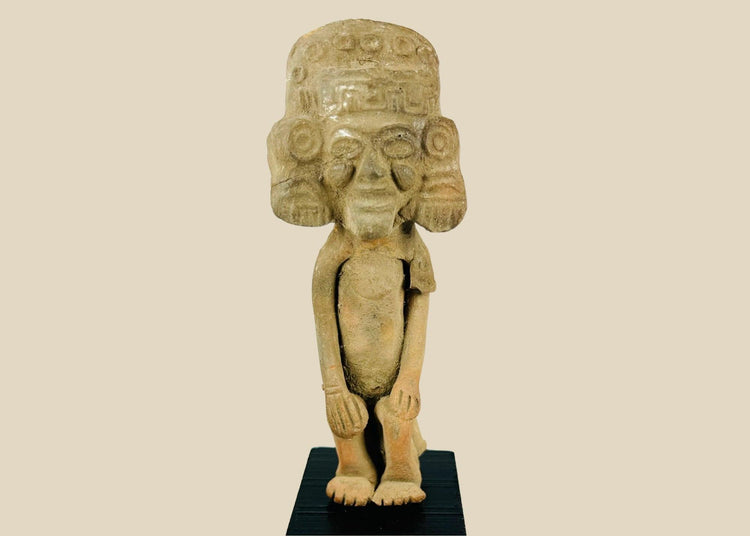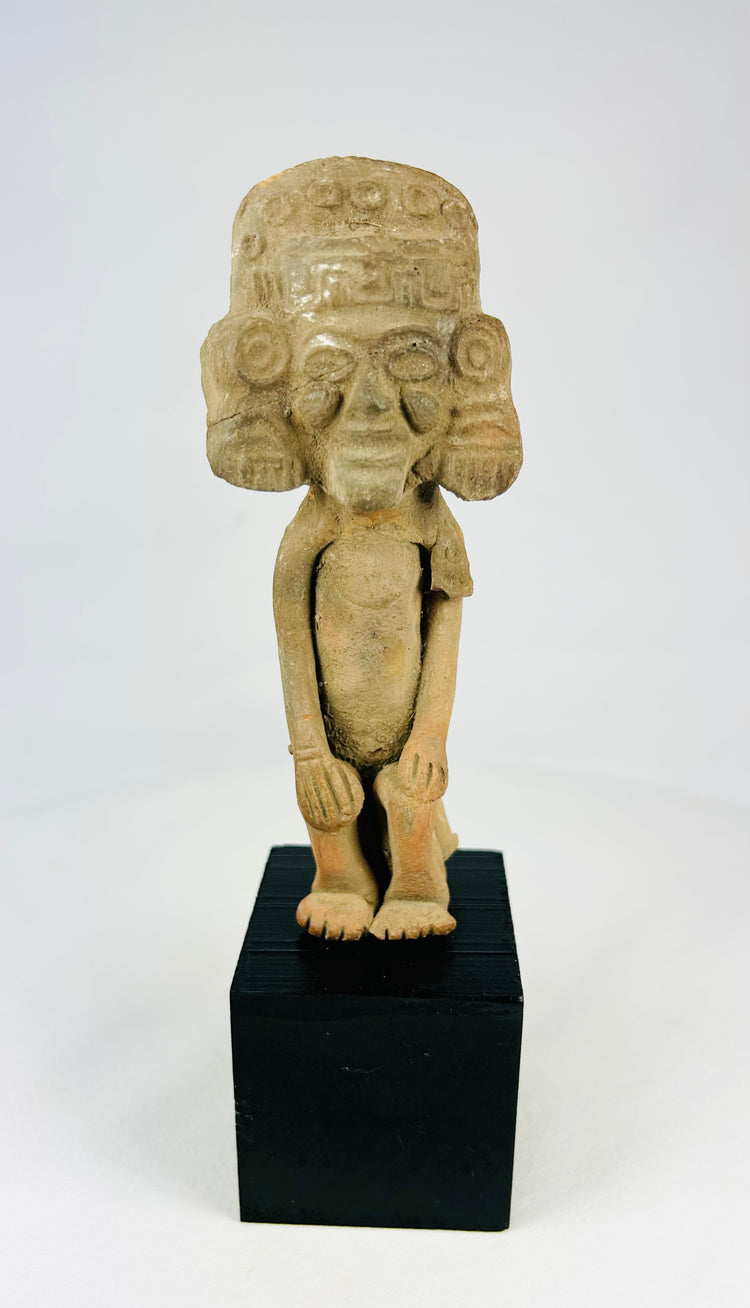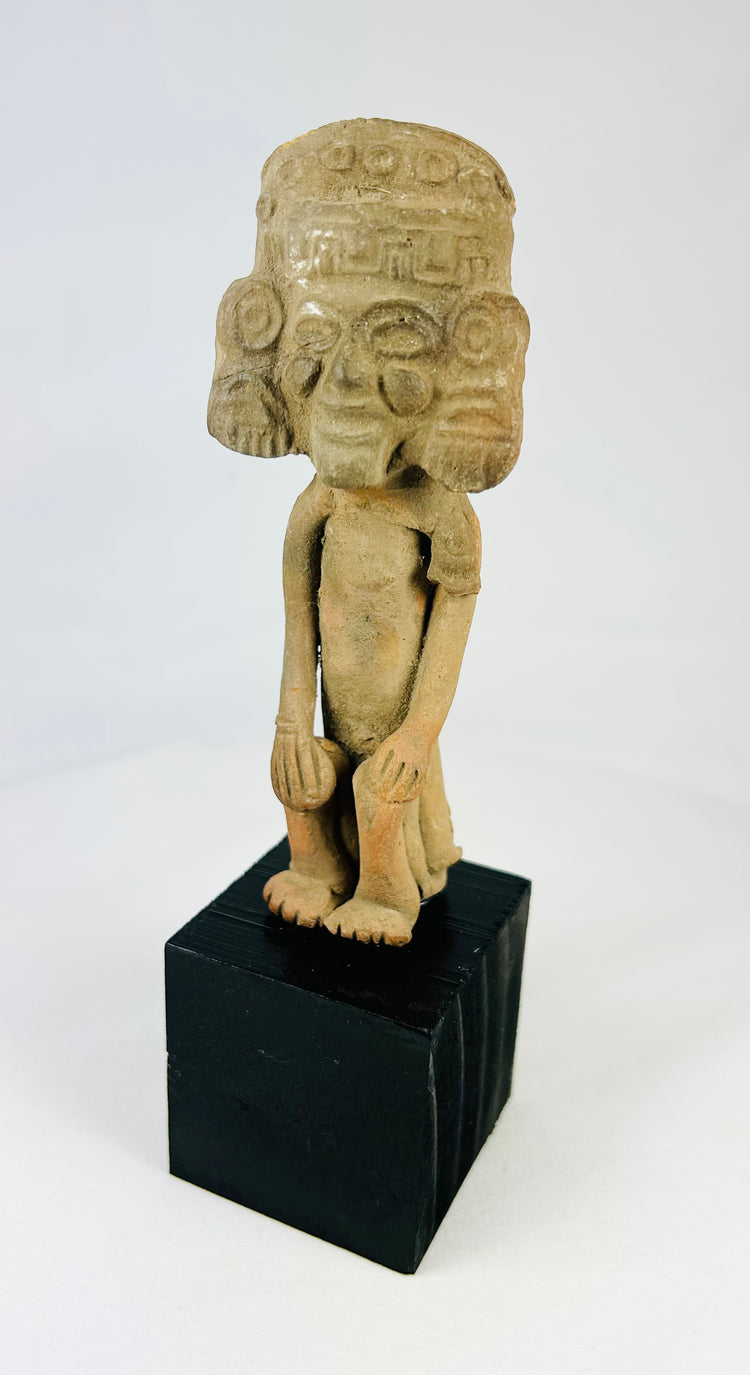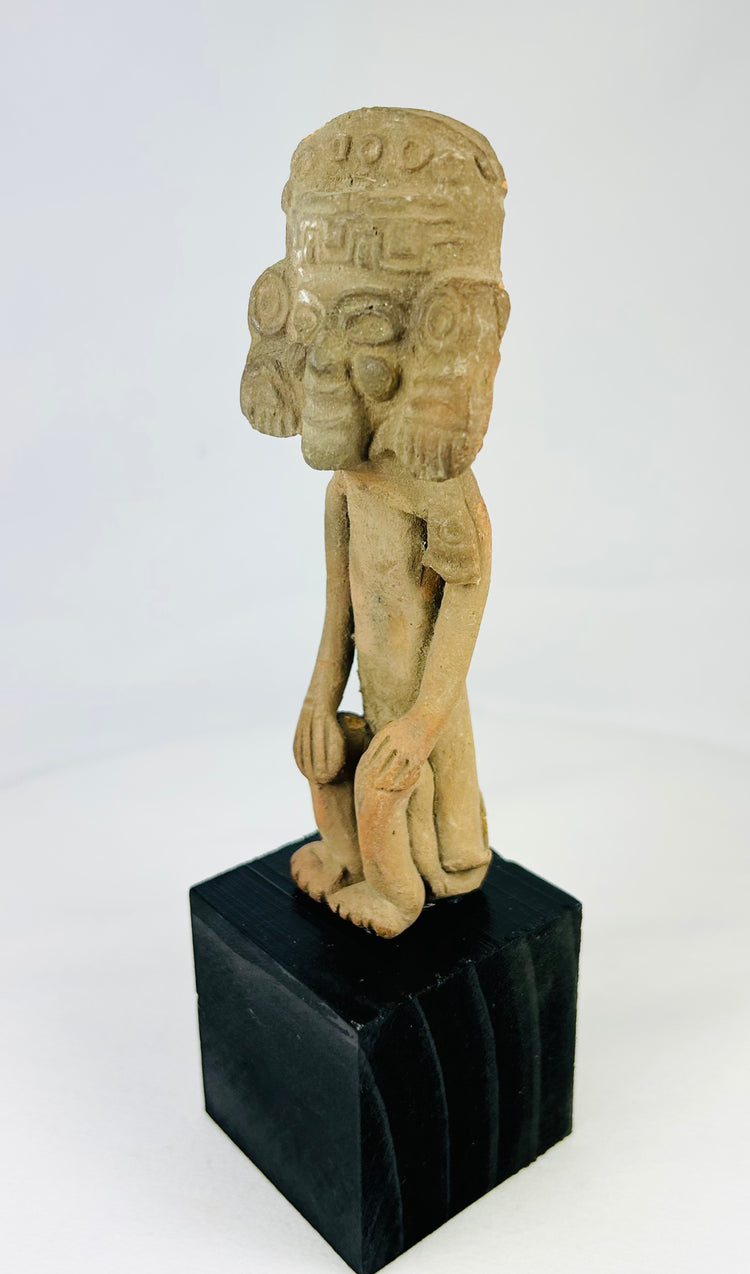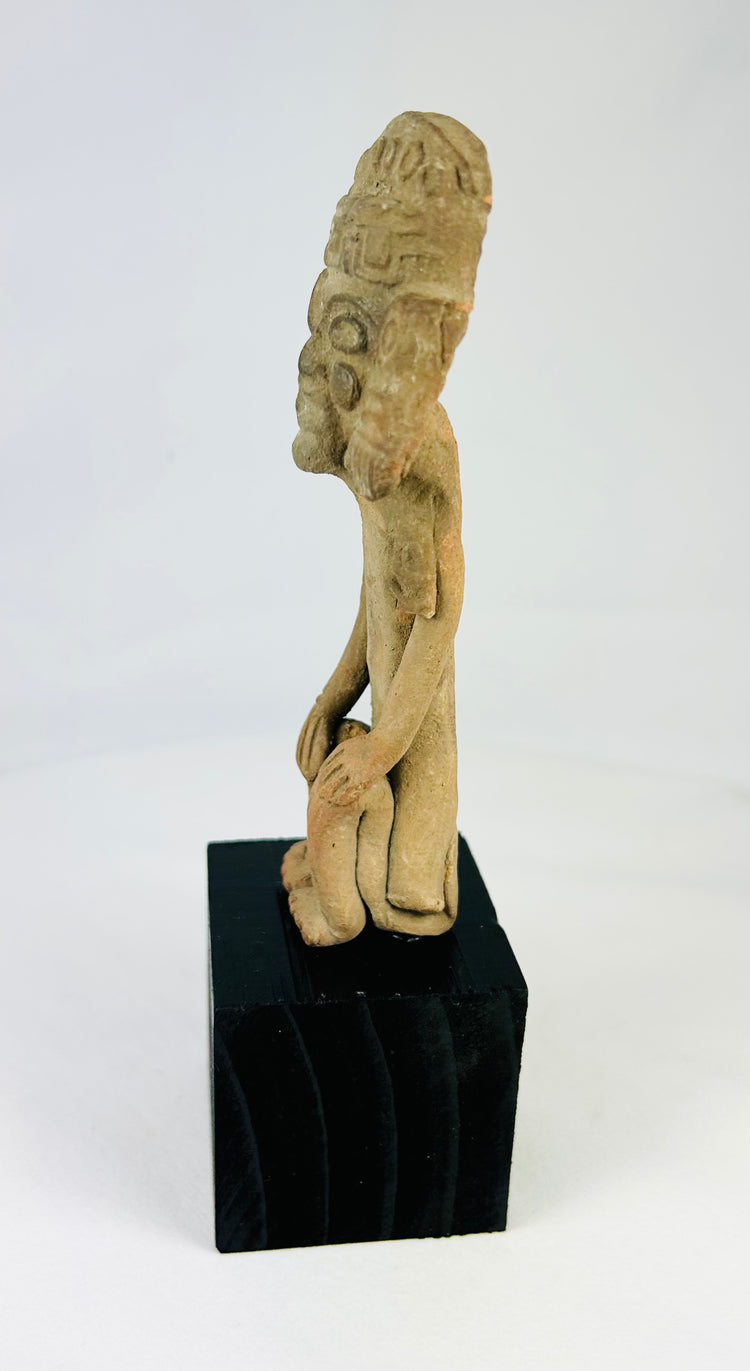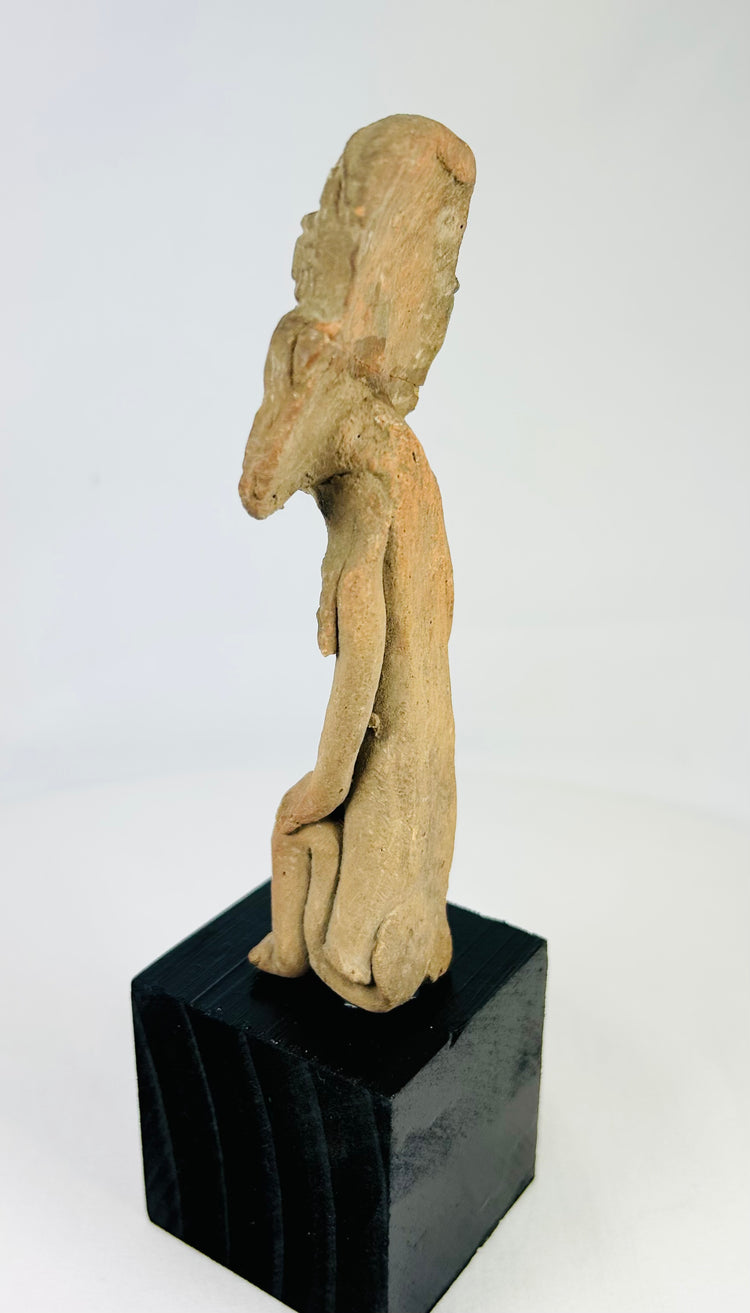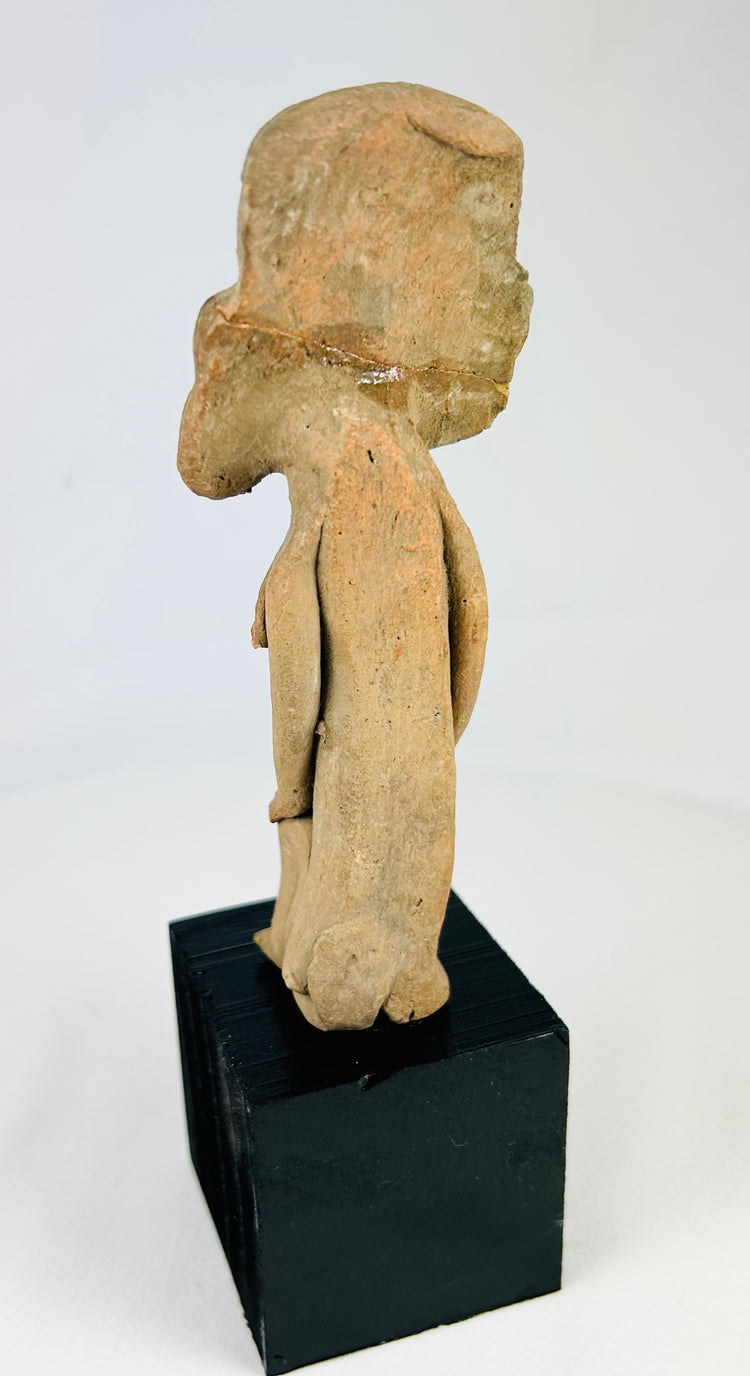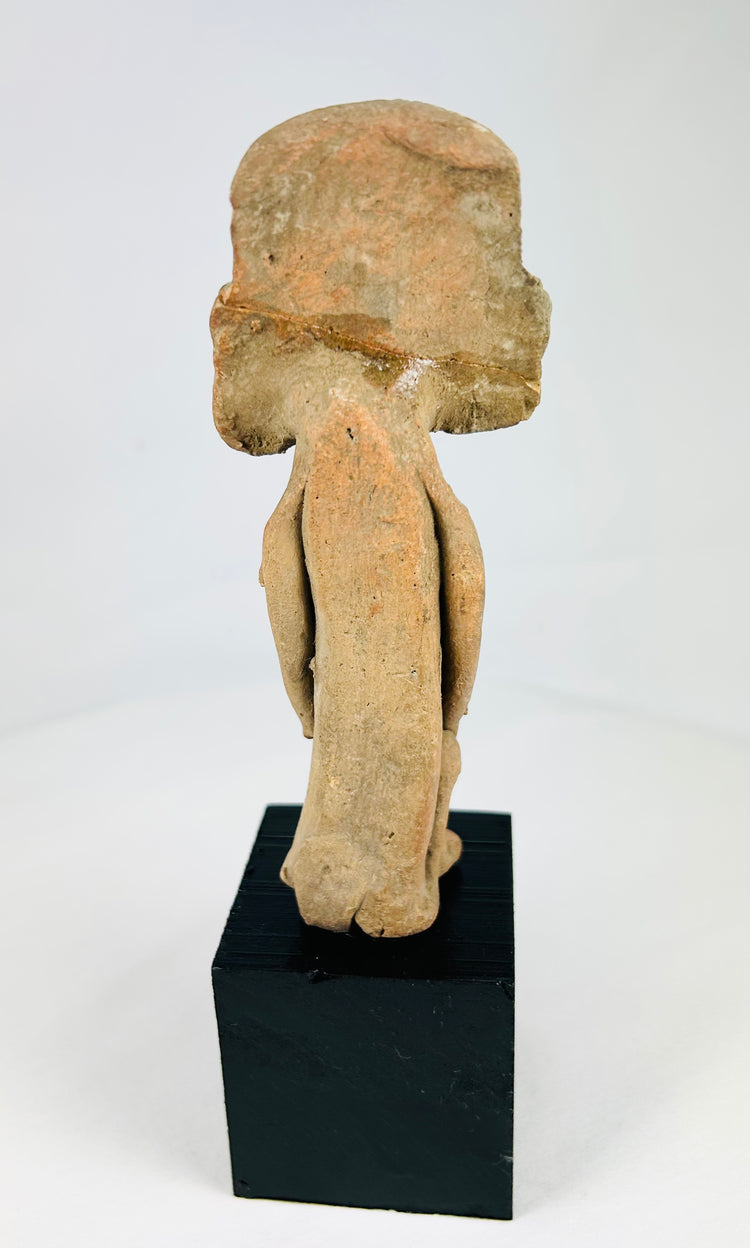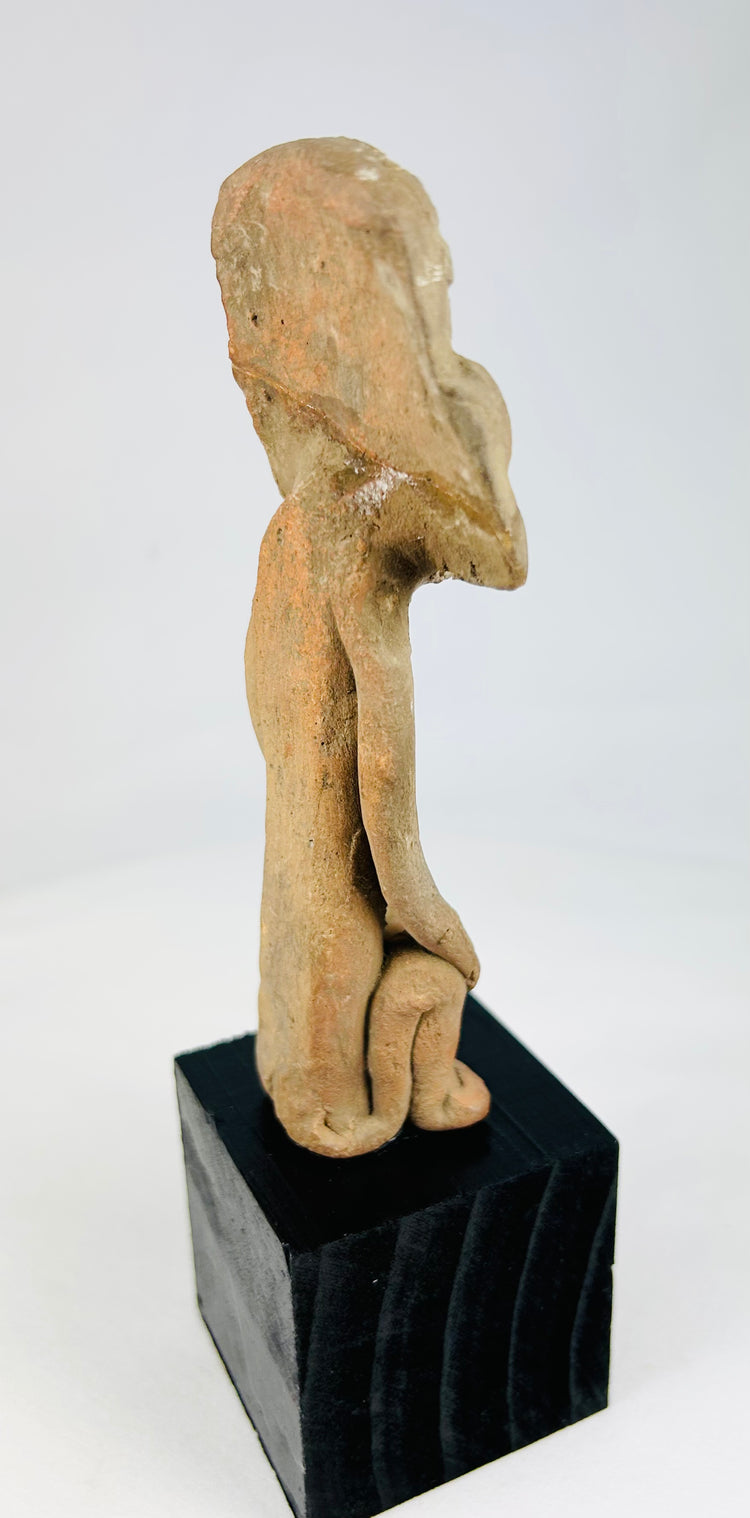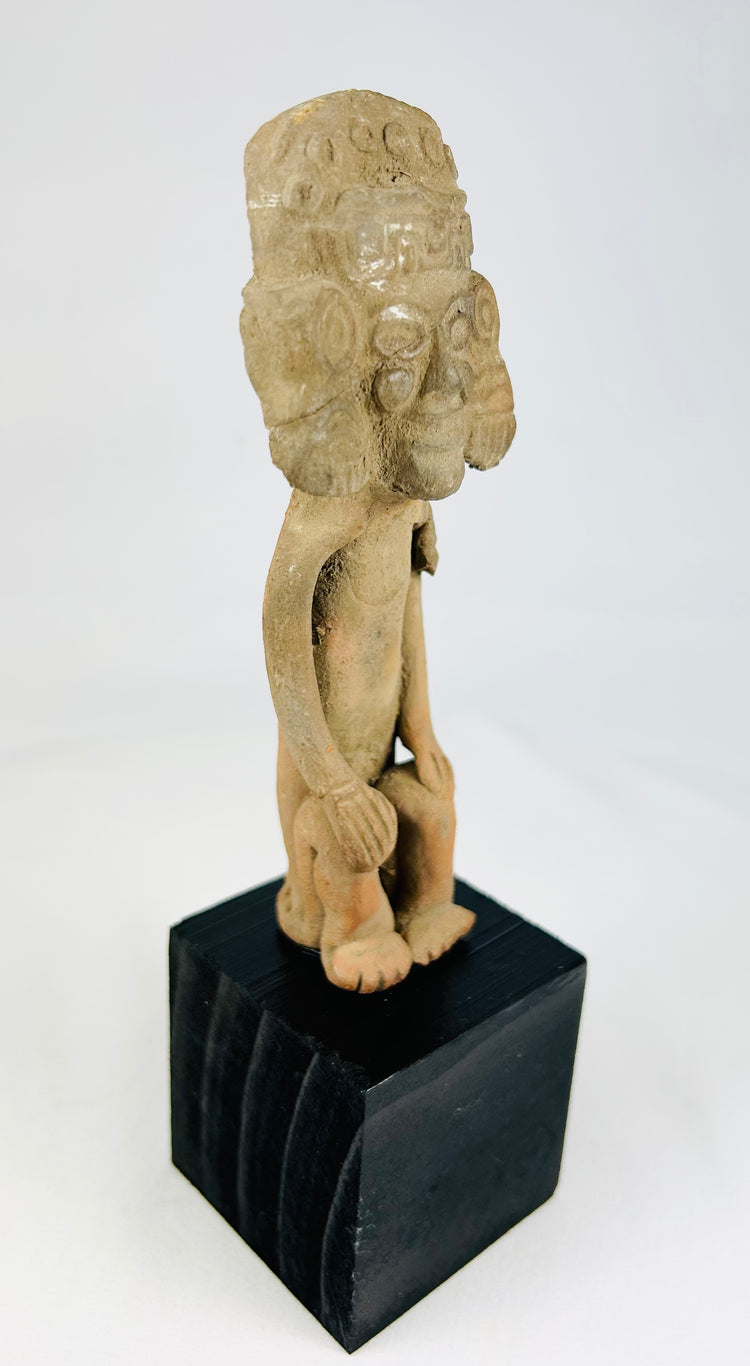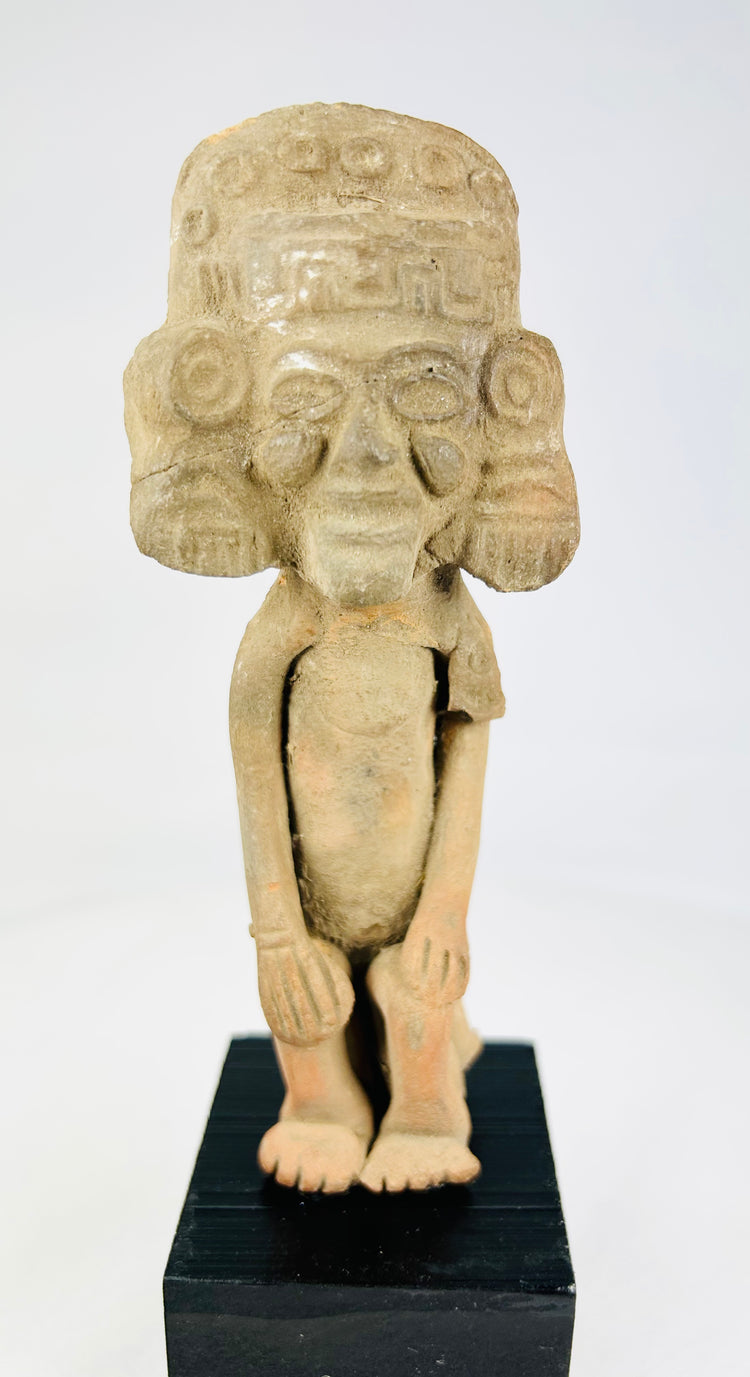Classic Teotihuacan Terracotta Attendant | Hands-on-Knees | Circa 250–600 CE
Description
More
Less
Historical Context & Origin
Region: Central Mexico, Teotihuacan sphere (with stylistic affinities to Classic Veracruz mold-made figures)
Material: Hand-modeled and partially mold-made terracotta with earthen accretions; mounted on a modern black wood block
Period: Classic Period, ca. 250–600 CE
Description
A compact standing/kneeling figurine depicting a slender person with arms dropped forward and hands resting on the knees—an attitude associated with attendants or ritual participants. The figure wears a tall cylindrical headdress incised with roundels and a step-fret band, and large circular earspools; faint cheek patches are modeled on the face.
The surfaces retain their original buff/orange clay tones with mineral accretions and soil sheen from burial. The flattened back and crisp front modeling are characteristic of Central Mexican/Classic Veracruz mold traditions linked to Teotihuacan. Presented on a modern black wood stand (included).
Features
- Classic Period Mesoamerican terracotta figure, Teotihuacan sphere
- Tall cylindrical headdress incised with roundel and step-fret motifs
- Large disk earspools and faint cheek patches
- Hands-on-knees posture with slim, elongated proportions
- Evident archaeological age: burial sheen, mineral accretions, and earthen deposits
- Custom display stand included
Cultural Significance
Mold-made and hand-finished terracotta figures like this were widely produced in Teotihuacan and neighboring Gulf Coast workshops. They were placed in burials and domestic shrines, likely serving as representations of ancestors, attendants, or ritual participants. Their distinctive headdresses and ear ornaments echo elite attire seen in Teotihuacan murals and Classic Veracruz sculpture, bridging household devotion with broader ceremonial imagery.
Condition
Good archaeological condition with expected age wear. Stable old repair horizontally across the headdress. Minor edge nicks, tip wear to fingers and toes, encrustations, and surface abrasions consistent with burial. No active losses. Stands securely on included block.
Dimensions (approximate)
Height: 7.25 in
Width: 2 in
Depth: 2 in
Age
Circa 250–600 CE, Classic Period, Teotihuacan/Classic Veracruz mold tradition
Description
Historical Context & Origin
Region: Central Mexico, Teotihuacan sphere (with stylistic affinities to Classic Veracruz mold-made figures)
Material: Hand-modeled and partially mold-made terracotta with earthen accretions; mounted on a modern black wood block
Period: Classic Period, ca. 250–600 CE
Description
A compact standing/kneeling figurine depicting a slender person with arms dropped forward and hands resting on the knees—an attitude associated with attendants or ritual participants. The figure wears a tall cylindrical headdress incised with roundels and a step-fret band, and large circular earspools; faint cheek patches are modeled on the face.
The surfaces retain their original buff/orange clay tones with mineral accretions and soil sheen from burial. The flattened back and crisp front modeling are characteristic of Central Mexican/Classic Veracruz mold traditions linked to Teotihuacan. Presented on a modern black wood stand (included).
Features
- Classic Period Mesoamerican terracotta figure, Teotihuacan sphere
- Tall cylindrical headdress incised with roundel and step-fret motifs
- Large disk earspools and faint cheek patches
- Hands-on-knees posture with slim, elongated proportions
- Evident archaeological age: burial sheen, mineral accretions, and earthen deposits
- Custom display stand included
Cultural Significance
Mold-made and hand-finished terracotta figures like this were widely produced in Teotihuacan and neighboring Gulf Coast workshops. They were placed in burials and domestic shrines, likely serving as representations of ancestors, attendants, or ritual participants. Their distinctive headdresses and ear ornaments echo elite attire seen in Teotihuacan murals and Classic Veracruz sculpture, bridging household devotion with broader ceremonial imagery.
Condition
Good archaeological condition with expected age wear. Stable old repair horizontally across the headdress. Minor edge nicks, tip wear to fingers and toes, encrustations, and surface abrasions consistent with burial. No active losses. Stands securely on included block.
Dimensions (approximate)
Height: 7.25 in
Width: 2 in
Depth: 2 in
Age
Circa 250–600 CE, Classic Period, Teotihuacan/Classic Veracruz mold tradition
You May Also Like




























